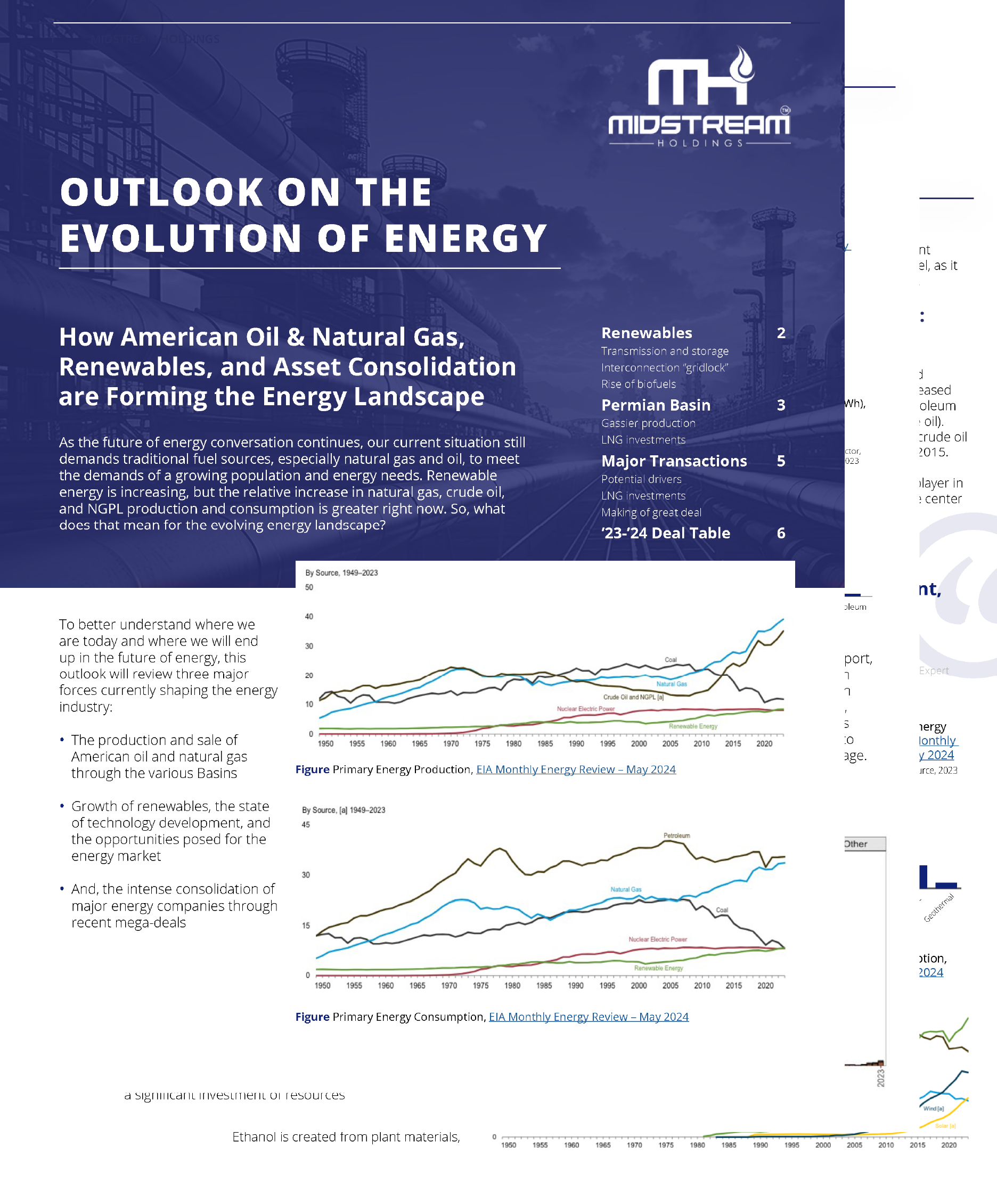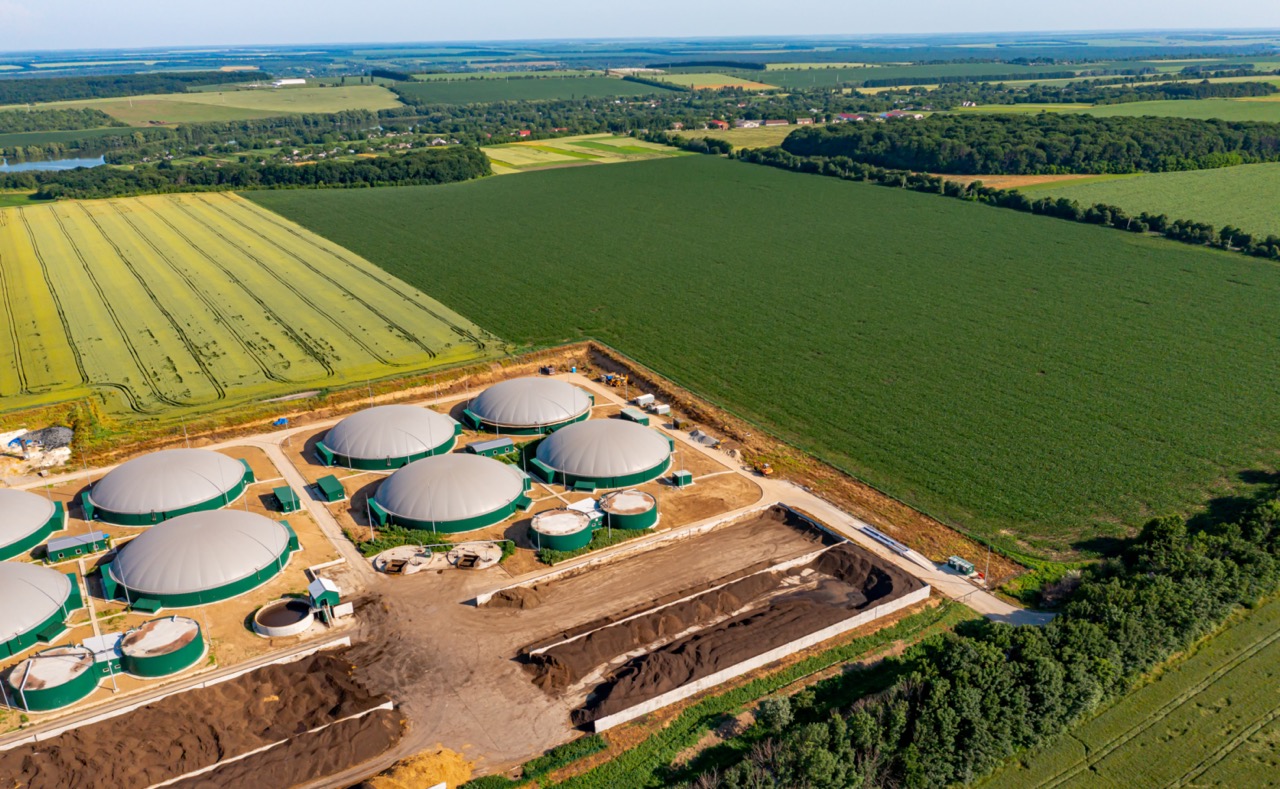

Outlook on the Evolution of Energy
Read more about the most recent insights, with commentary from energy investment experts.

Most attention in the energy transition is focused on power sources like solar, wind, and hydropower, but transportability and efficiency in transmission are major challenges for these energy sources. Considering these challenges, renewable biofuels are gaining popularity, as they use currently existing transmission infrastructure, including pipelines, rail, and trucking to transport energy. Popular biofuel alternatives utilizing current infrastructure today include ethanol, renewable diesel, and SAF. Carbon capture and utilization are also facing growing demand as a potential avenue for GHG emission reduction, as showcased by recent transactions in the midstream industry.
The energy industry is currently experiencing a significant change, as it pivots towards more renewable energy sources. With energy being at a notable transition point, this industry-wide shift is defined by developing new technologies and designs for distributing emerging fuel sources.
Through a series of strategic acquisitions of key assets, high-emission industries will be able to harness the potential of carbon-reducing technologies that align with their personal business goals. Certain key renewable energy sources are already successfully integrating with existing energy infrastructure, such as ethanol, renewable diesel, and sustainable aviation fuel (SAF). Ultimately, a more sustainable future is in sight, as the demand for biofuels continues to rise.
The generation of electricity and the need for transportation fuel are two leading contributors of greenhouse gas emissions (GHG). Leading energy companies focusing on corporate social responsibility aim to address this problem by fostering eco-friendly energy alternatives like RNG, hydrogen, ethanol, renewable diesel, and sustainable aviation fuel (SAF).
Additionally, other emission-reducing initiatives are being pushed to the forefront, including carbon capture, utilization, and storage (CCUS). As such technology continues to be improved over time, high-emission industries, such as oil and gas, and energy, can all benefit from acquiring technology compatible with existing operational assets.
In this article, we look at three biofuels rising in popularity and poised to make a significant difference in the energy mix – ethanol, renewable diesel, and sustainable aviation fuel (SAF). We also review transactions in CCUS in the energy industry to get a pulse on the recent energy transition events.
Ethanol is created from plant materials, such as sugars and starches like corn. The usage of ethanol is widespread, with 98% of the gasoline in the United States containing a traceable amount. Ethanol is usually found within a 10% blend of gasoline (E10). However, other concentrations are available for special types of vehicles in E85 and E15 blends.
While E10 and E15 are commonly sourced from fuel terminals, E85 blends can be sourced from a terminal or straight out of an ethanol production facility. Across the total life cycle of the fuel source, ethanol is estimated to reduce GHG emissions by 40%.
Derived from animal byproducts, renewable diesel is produced from waste fats and oils. Because they are chemically similar, renewable diesel is often blended with petroleum diesel to create a more eco-friendly fuel alternative. Additionally, it is used to replace petroleum altogether. As demand for low-emission fuels continues to rise steadily, the production of renewable diesel is anticipated to increase rapidly.
The International Civil Aviation Organization (ICAO) reports that sustainable aviation fuel has been used in more than 360,000 commercial flights, most of which originated in the United States and Europe. SAF is made from various materials, including food scraps, yard waste, biomass, fats, oils, and other types of feedstock. Depending on how it is produced, SAF can be better for the environment compared to conventional jet fuel, as it reduces GHG emissions by 94%.
Before it can be used, SAF is blended with Jet A fuel. The co-production of SAF and conventional jet fuel allows the fuel to be distributed through the existing supply chain network, including pipeline systems. Considering the current limitations of powering aircraft with electricity and hydrogen, SAF is currently rising to the top as a realistic and sustainable solution for lowering air travel emissions.
In July of 2023, Exxon revealed its conclusive agreement to acquire Denbury Inc., an experienced developer of carbon capture, utilization, storage solutions (CCUS), and oil recovery. With the asset acquisition expected to accelerate Exxon’s low-carbon solutions, the all-stock transaction was valued at $4.9 billion. The deal occurred as part of Exxon’s commitment to lower its carbon value chains, which include CCUS, ammonia, hydrogen, biofuels, and direct air capture.
“Acquiring Denbury reflects our determination to profitably grow our Low Carbon Solutions business by serving a range of hard-to-decarbonize industries with a comprehensive carbon capture and sequestration offering,” said Darren Woods, Chairman and CEO of Exxon.
Midstream Holdings is the web-based platform for acquisitions and divestitures of midstream assets. We provide information transparency and opportunities for you to focus on your core assets and key business objectives in the midstream space.
Source: https://afdc.energy.gov/fuels